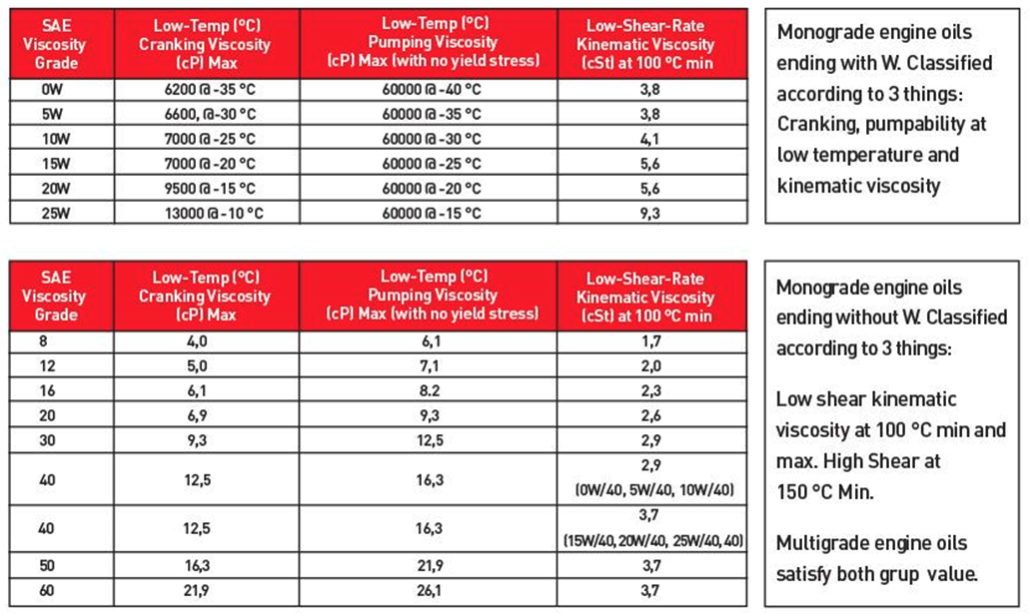The engine's characteristics are considered in selecting engine lubricant for internal combustion engines. Lubricant manufacturers apply three key criteria in producing the oil suitable for the relevant machine. These three key selection criteria are as follows:
- Viscosity class
- Performance level
- OEM approval (Approval of the Original Equipment Manufacturer)
In addition, additional criteria (base oil quality, ash rate, viscosity index, pour point, evaporation loss, fuel economy, etc.) are also important.
The viscosity class is defined based on the norms of the SAE (Society of Automotive Engineers). (SAE J300)



